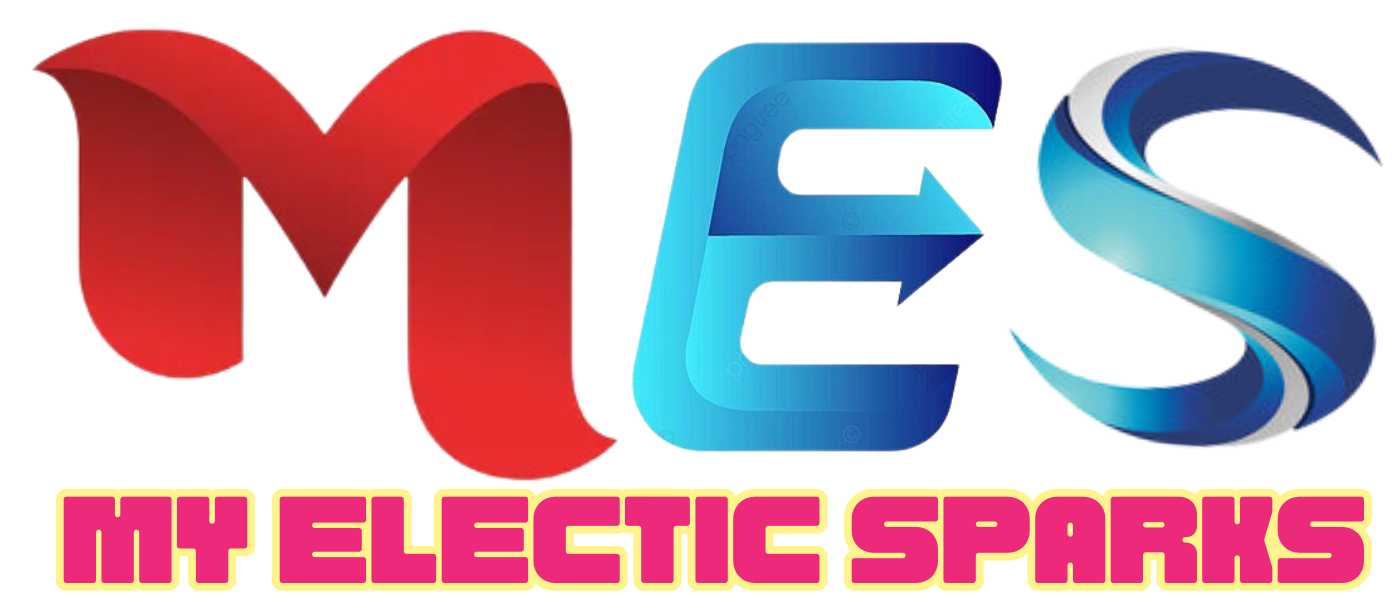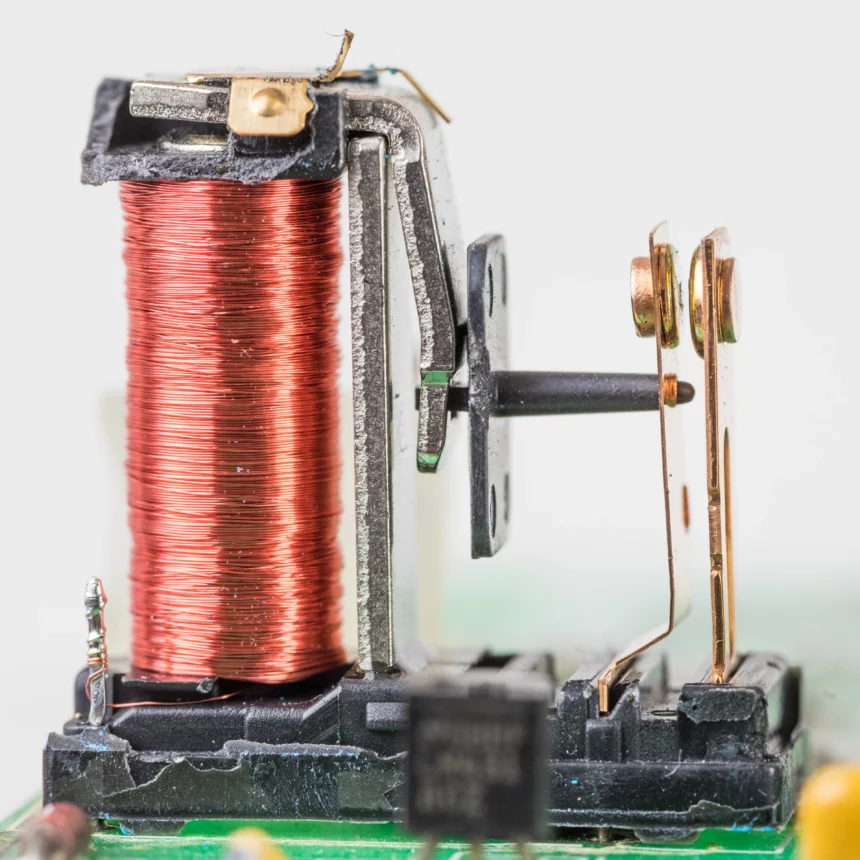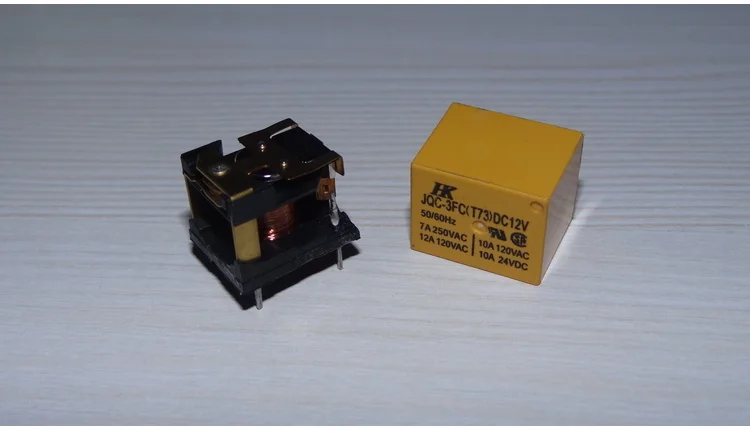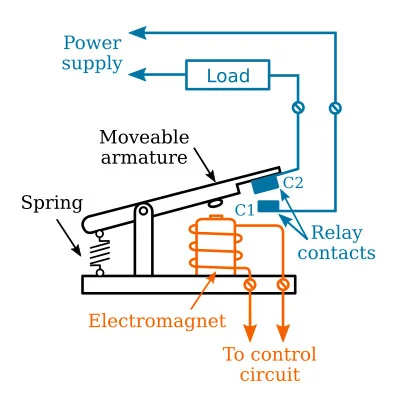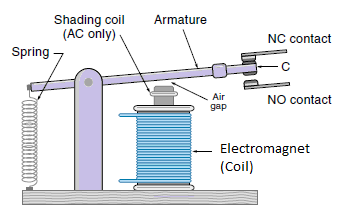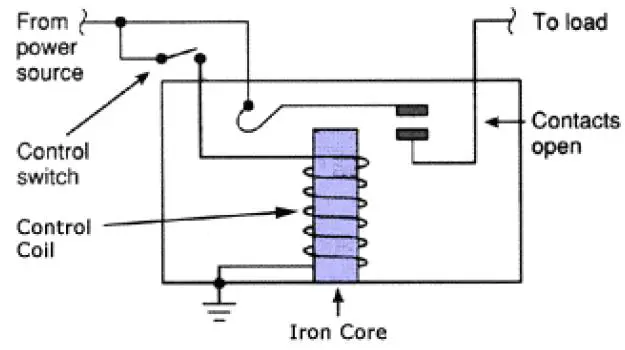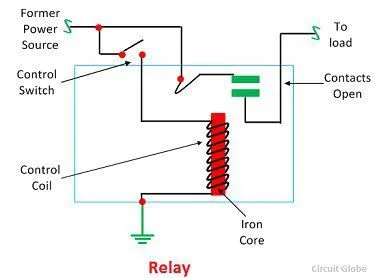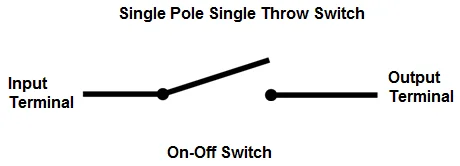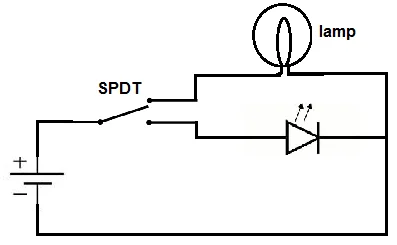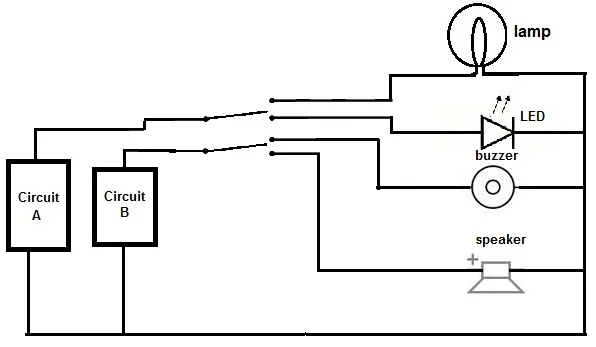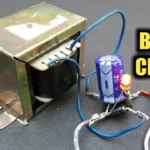This article is all about what Relay is and how it works. We also mentioned the point information about the Relay type “Electromechanical Relay.” Before going forward, carefully learn what Relay is. As we know, this age is the age of invention and knowledge. Some other electronic devices are also designed for safety measures when new electronics are invented. So Relay is also one of them. After understanding and reading carefully, you will be able to understand ” what is a relay and how it works”?
What is a Relay?
It is an electronic device designed like a switch, but it works manually based on the opening and closing of the circuit. The work of Relay is based on an electrical signal in charge of opening and closing the circuit.
TYPES:
Different types of Relays can be used according to the situation. Some of these types are Electromechanical and Solid-state. There are many other types, but all have the same function.
1: ELECTROMECHANICAL RELAY:
It is an electrical device based on electromagnetism to control the switching mechanism automatically. This relay is used to control high-power electrical machines.
Currently, primarily electrical machines use an electromechanical relay to control low signals and multiple circuits by only 1signal.
APPLICATIONS:
Some of the Electromagnetic applications are the general aviation, aerospace, and wireless technology industries, and there are many more devices based on electromechanical relays. This type of relay consists of the following elements:
- Electromagnet.
- Mechanically movable contact.
- Switching points.
- Spring.
For details, check out the link “what exactly is electromechanical relay?
ELEMENTS OF ELECTROMECHANICAL RELAY:
The explanation is based on the image given above as all components are present but need little-bit explanations that are given below:
1: Electromagnet
Before moving forward, know about the construction of the Electromagnetic component. This component is constructed by binding a copper coil on a metal core. Then, its ends are attached to the relay, and these pins work as DC supply pins.
OTHER ELEMENTS:
The other elements, such as Mechanical Moveable contact and Switching point, are explained together as their work depends on one another.
So There are commonly two more contacts. One is known as Switching points and their function is to control high load Ampere and the other known as Common contact and its function is to attach the switch points.
ELECTROMECHANICAL POLES NAME:
From the above image contact can be named as: (NO) refers to normally open, (NC) to normally closed, and (COM) stands for standard contracts.
Also Read: How a two way switch wiring works types and examples
ELECTROMECHANICAL OPERATING:
Electromechanical relay can be either operated by using AC or DC. When it’s operated using an AC relay, each coil gets demagnetized each time when the current value is zero. As a result, circuit breaking will take place each time. To avoid such problems, the Ac relays are specially designed with a different mechanism that controls the continuity of magnetism. The unique AC mechanism is designed with electronic circuits or a shaded coil mechanism.
Working
- Its main working principle is based on Electromagnetic waves.
- Electromagnetic waves are supplied alongside some current, bringing out a magnetic field in its surroundings.
- The Copper coil and Iron core bring out the Electromagnetic function in the Relay.
- If the DC is supplied to the coil, it starts attaching, as shown in the image. This is known as the energizing of the Relay.
- If the current is removed, it moves back to its original position, and this state is known as energizing.
- There are also relays opposite to those mentioned above, such as solid-state relays, which have sensors that detect the input voltage and control the output using opto-coupling.
More clearly, the working principle is described as follows:
Working principle of Relay
It operates on the principle of electromagnetic attraction. When the circuit of the Relay senses the error in the circuit, it energizes the electromagnetic field, which generates the temporary magnetic field.
This magnetic field influences the relay armature for the availability or closing of the contacts. The small power relay becomes only one contact, and the high power has two contacts to open the switch.
The inner section of the Relay is shown in the figure subsequently. It has an iron core, which is wound by a control coil. The power supply is given to the coil within the load contacts and the control switch. The current flow over the coil produces a magnetic field throughout it.
Also Read: How to Interface oled display with Esp32 ?
Due to this magnetic field, the overhead arm of the magnet attracts the lower arm. Therefore, close the circuit, which makes the current flow through the load. If the contact is already closed, it suddenly moves opposed and opens the contacts.
Relay Contact Types
Let’s study relay contact types. It is also applicable to “Poles and Throws” terminology. It can be classified based on the number of contacts and circuits.
Poles and Throws
You must ask: “What are Poles and Throws?”?.
The Answer is that every Relay can control one or multiple circuits, so each switch is named a pole, and Several circuits to which a relay is attached are known as “throws.” According to the Poles and Throws, Relay is divided into:
- Single pole, single throw
- single pole double throw
- Double pole single throw
- double pole double throw
Single Pole Single Throw
The Single Pole throw means the Relay is attached to one circuit and output. It is commonly used in devices designed for ON and OFF.
Single Pole Double Throw
The Single pole double throw means that the relay is attached to one circuit and one output out of two outputs. It is also named a changeover.
Double pole single throw
A double pole single throw means it is attaching two terminals of a single circuit simultaneously.
Double pole, double throw
The double pole double throw relay is beneficial for phase and polarity reversals as it consists of two poles and two throws. Double pole, double throw. All these Relays will act when their coil is charged or energized.
NOTE: It can be further divided on the basis of their functions, structure, and application, etc.
Relay Applications
Relays are designed for protection and to control the voltage flow to the electrical machines. It is also used for changing the high voltage to a low voltage signal to protect electrical machines. Examples are Audio Amplifiers and Modems.
Another essential function of it is detecting and isolating errors. Some of the areas in which Relays are used:
- Stems.
- Telecommunication.
- Industrial process controllers.
- Traffic control.
- The motor drives control.
- Protection systems of the electrical power system.
- Computer interfaces.
- Automotive.
- Home appliances.
CONCLUSION:
After going through all the articles, you must understand what a relay is. What are its functions, types, working, etc.
Feedback: For any difficulty comment down below and also give us feedback about our article.
